
A tuna is a saltwater fish that belongs to the tribe Thunnini, a subgrouping of the Scombridae (mackerel) family. The Thunnini comprise 15 species across five genera, the sizes of which vary greatly, ranging from the bullet tuna up to the Atlantic bluefin tuna. The Atlantic bluefin averages 2 m (6.6 ft), and is believed to live up to 50 years.
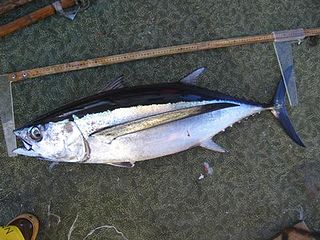
The albacore, known also as the longfin tuna, is a species of tuna of the order Perciformes. It is found in temperate and tropical waters across the globe in the epipelagic and mesopelagic zones. There are six distinct stocks known globally in the Atlantic, Pacific, and Indian oceans, as well as the Mediterranean Sea. The albacore has an elongate, fusiform body with a conical snout, large eyes, and remarkably long pectoral fins. Its body is a deep blue dorsally and shades of silvery white ventrally. Individuals can reach up to 1.4 m in length.
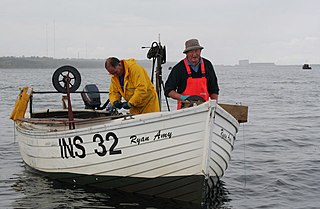
Longline fishing, or longlining, is a commercial fishing technique. It uses a long line, called the main line, with baited hooks attached at intervals by means of branch lines called snoods. A snood is a short length of line, attached to the main line using a clip or swivel, with the hook at the other end. Longlines are classified mainly by where they are placed in the water column. This can be at the surface or at the bottom. Lines can also be set by means of an anchor, or left to drift. Hundreds or even thousands of baited hooks can hang from a single line. Longliners – fishing vessels rigged for longlining – commonly target swordfish, tuna, halibut, sablefish and many other species.
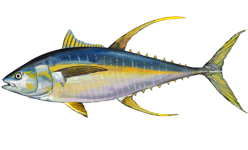
The yellowfin tuna is a species of tuna found in pelagic waters of tropical and subtropical oceans worldwide.
The International Commission for the Conservation of Atlantic Tunas (ICCAT) is an intergovernmental organization responsible for the management and conservation of tuna and tuna-like species in the Atlantic Ocean and adjacent seas. The organization was established in 1966, at a conference in Rio de Janeiro, Brazil, and operates in English, French and Spanish. The organisation has been strongly criticised by scientists for its repeated failure to conserve the sustainability of the tuna fishery by consistently supporting over-fishing – an internal review branded ICCAT's policies on the eastern Atlantic bluefin tuna fishery a "travesty of fisheries management", and an "international disgrace". Conservationists often refer to ICCAT as "The International Conspiracy to Catch All Tuna".
A fish aggregatingdevice (FAD) is a man-made object used to attract ocean-going pelagic fish such as marlin, tuna and mahi-mahi. They usually consist of buoys or floats tethered to the ocean floor with concrete blocks. FADs attract fish for numerous reasons that vary by species.

The bigeye tuna is a species of true tuna of the genus Thunnus, belonging to the wider mackerel family Scombridae.

NOAA Ship John N. Cobb was a National Oceanic and Atmospheric Administration research vessel in commission from 1970 to 2008. She was named for John Nathan Cobb and was the oldest commissioned ship in the NOAA fleet when she was decommissioned, having previously served in the United States Department of the Interior′s Fish and Wildlife Service from 1950 to 1956 and in the United States Fish and Wildlife Service′s Bureau of Commercial Fisheries from 1956 to 1970 as R/V John N. Cobb.

USNS Adventurous (T-AGOS-13) was a Stalwart-class modified tactical auxiliary general ocean surveillance ship of the United States Navy in service from 1988 to 1992. She was in non-commissioned service in the Military Sealift Command from 1988 to 1992, operating during the final years of the Cold War. She was transferred to the National Oceanic and Atmospheric Administration (NOAA) in 1992 and in 2003 was commissioned into service with NOAA as the fisheries research ship NOAAS Oscar Elton Sette.

As with other countries, the 200 nautical miles (370 km) exclusive economic zone (EEZ) off the coast of the United States gives its fishing industry special fishing rights. It covers 11.4 million square kilometres, which is the second largest zone in the world, exceeding the land area of the United States.
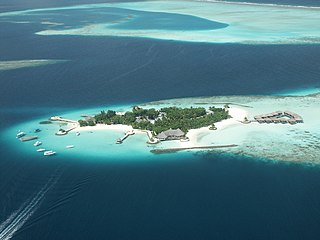
The fishing industry in the Maldives is the island's second main industry. According to national tradition in the words of former President Maumoon Abdul Gayoom, "Fishing is the lifeblood of our nation, it is inborn. From the soil on which we live, to the sea around us, it remains an integral part of our existence. Fishing, and our country and its people, [are] one and shall remain inseparable forever." The Maldives has an abundance of aquatic life and species of fish. Common are tuna, groupers, dolphin fish, barracuda, rainbow runner, trevally and squirrelfish and many more. Aside from being of essential importance to the economy, fishing is also a popular recreational activity in the Maldives, not only among locals but by tourists. The islands have numerous fishing resorts which cater for these activities.
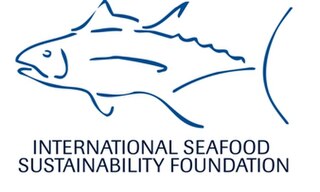
International Seafood Sustainability Foundation (ISSF) was formed in 2009 as a global, non-profit partnership among the tuna industry, scientists and World Wide Fund for Nature. The multistakeholder group states its mission is to undertake science-based initiatives for the long-term conservation and sustainable use of tuna stocks, reducing bycatch and promoting ecosystem health. Regional Fisheries Management Organizations (RFMOs) are primarily responsible for managing the world's tuna stocks—skipjack, yellowfin and albacore tuna, the species most commonly processed for canned and shelf-stable tuna products, but their parliamentary procedures too often allow the short-term economic and political interests of nations to prevent sustainable measures from being adopted. ISSF works to ensure that effective international management practices are in place to maintain the health of all the tuna stocks.
The Republic of the Marshall Islands has a commercial fishery that targets bigeye and yellowfin tuna using pelagic longline fishing gear. There were 55 longline vessels licensed to fish in the Republic of the Marshall Islands Exclusive Economic Zone (EEZ) in 2011, of which 4 were Marshall Islands-flagged and 51 were foreign-licensed vessels, including 22 Chinese-flagged, 16 Japanese-flagged, 11 Federated States of Micronesia-flagged, and 2 Taiwan-flagged. The Japanese-flagged longliners land their catch in Japan; the other 39 vessels were domestically-based. In 2011, the Marshall Islands longline fleet had reported landings of principal market species of 259 mt of bigeye tuna, 99 mt of yellowfin tuna, 37 mt of blue marlin, 7 mt of black marlin, 4 mt of albacore tuna, and 3 mt of broadbill swordfish. Fresh chilled bigeye and yellowfin tuna is exported primarily to markets in the U.S., China and Canada, and frozen tuna and incidental market species are exported to China and marketed locally.

NOAAS Townsend Cromwell was an American fisheries research vessel that was in commission in the National Oceanic and Atmospheric Administration (NOAA) fleet from 1975 to 2002. Prior to her NOAA career, she was in the United States Fish and Wildlife Service's Bureau of Commercial Fisheries fleet from 1963 to 1975 as US FWS Townsend Cromwell.

R/V Ocean Starr is an American research vessel. She was in the United States Fish and Wildlife Service's Bureau of Commercial Fisheries fleet from 1966 to 1970 as US FWS David Starr Jordan. The ship later served under the National Oceanic and Atmospheric Administration (NOAA) from 1970 to 2010.

The Western Pacific Regional Fishery Management Council (WPRFMC) is one of eight regional councils established under the Magnuson-Stevens Fishery Conservation and Management Act (MSA) in 1976 to manage offshore fisheries. The WPRFMC's jurisdiction includes the US exclusive economic zone (EEZ) waters around the State of Hawaii; US Territories of American Samoa and Guam; the Commonwealth of the Northern Mariana Islands (CNMI); and the US Pacific remote island areas of Johnston, Midway, Palmyra and Wake Atolls; Baker, Howland and Jarvis Islands; and Kingman Reef. This area of nearly 1.5 million square miles is the size of the continental United States and constitutes about half of the entire US EEZ. It spans both sides of the equator and both sides of the dateline. The WPRFMC also manages domestic fisheries based in the US Pacific Islands that operate on the high seas.

Oscar Elton Sette, who preferred to be called Elton Sette, was an influential 20th-century American fisheries scientist. During a five-decade career with the United States Bureau of Fisheries, United States Fish and Wildlife Service and its Bureau of Commercial Fisheries, and the National Marine Fisheries Service, Sette pioneered the integration of fisheries science with the sciences of oceanography and meteorology to develop a complete understanding of the physical and biological characteristics of the ocean environment and the effects of those characteristics on fisheries and fluctuations in the abundance of fish. He is recognized both in the United States and internationally for many significant contributions he made to marine fisheries research and for his leadership in the maturation of fisheries science to encompass fisheries oceanography, defined as the "appraisal or exploitation of any kind of [marine] organism useful to Man" and "the study of oceanic processes affecting the abundance and availability of commercial fishes." Many fisheries scientists consider him to be the "father of modern fisheries science."

Bell M. Shimada was an American fisheries scientist. He is noted for his study during the 1950s of tuna stocks in the tropical Pacific Ocean and its important effect on the development of the post-World War II tuna fishery on the United States West Coast.

RV John R. Manning was an American fisheries research vessel in commission in the fleet of the United States Fish and Wildlife Service from 1950 to 1969. She explored the Pacific Ocean in search of commercially valuable populations of fish and shellfish.

Of the twelve species of billfish, there are six species of Billfish in the Indian Ocean.


















